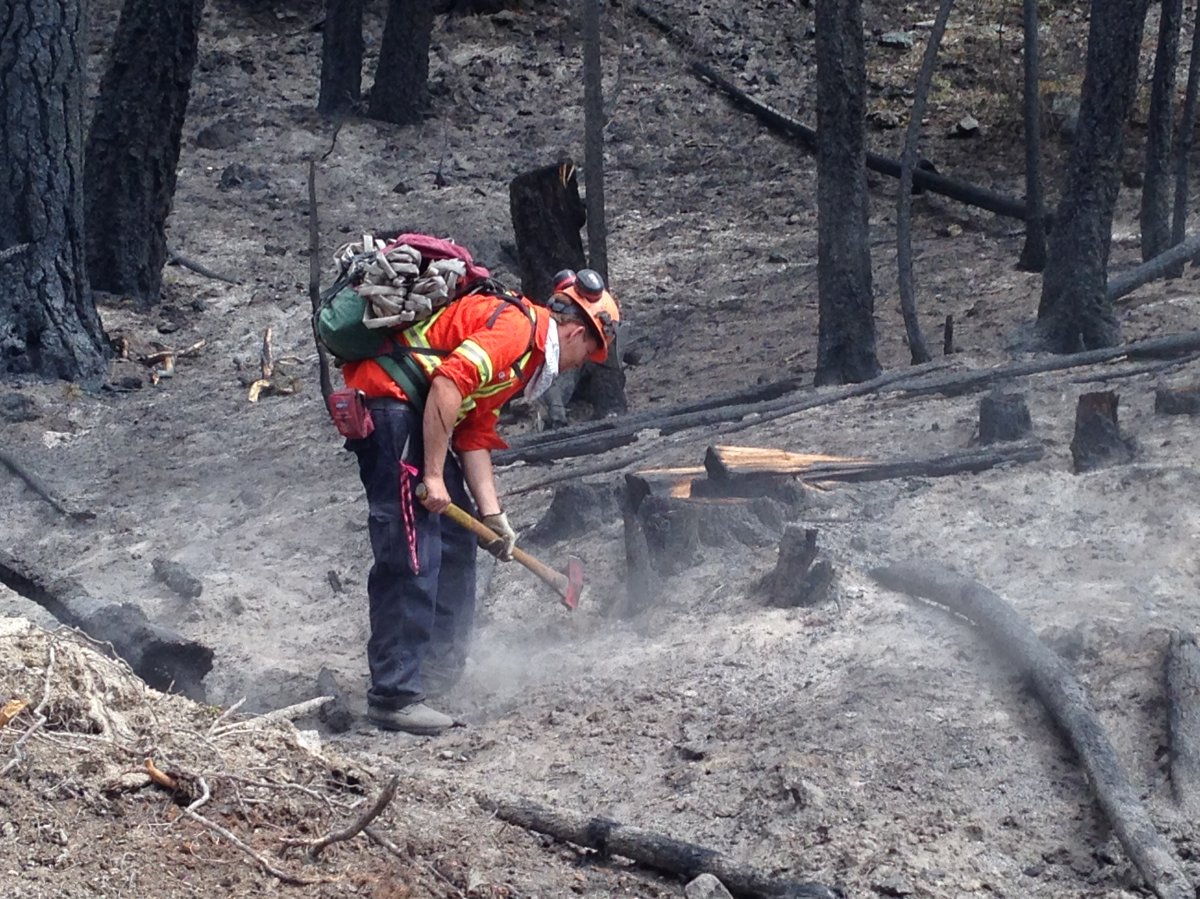With August nearly half over, B.C. has spent less than half what it shelled out to fight wildfires in the province, by this point in the summer.

The savings come the same year as the province boosted its wildfire fighting budget to $101 million, up from $64 million in the wake of a string of brutal fire seasons.
The BC Wildfire Service says the total cost of fighting fires so far has been $96,811,474, while efforts to battle 2018’s record-breaking wildfires had already climbed to $228,696,037 by Aug. 12.
On that day last summer, there were 593 wildfires burning across B.C. and more than 287,000 hectares had been scorched, according to fire information officer Erika Berg.
This year there are just 43 burning, with about 19,000 hectares burned.
On Sunday, evacuation alerts were lifted for Eagle Bluff wildfire near Oliver — the one major fire in the province burning close to communities.
WATCH: On the front lines: meet the unsung heroes of the Richter Mountain wildfire

“Mother Nature has been on our side. We had a fairly wet June and July which has certainly aided our wildfire suppression efforts,” said Berg.
“The severity of a fire season is highly dependent on local weather as opposed to those trends that we see long term. So those local weather patterns include precipitation, when and how much dry periods, when and for how long, as well as thunderstorms, wind events, and then how all these factors interact with each other.”
Data from Environment Canada shows that half of 24 weather regions in the province saw a wetter-than-normal July, while just three were drier than normal. In 2018, all but eight were drier than normal.

Get daily National news
About half of the province’s regions were warmer than normal this summer, though most by a degree or less, according to the agency. Last summer, all but three regions were warmer than normal, with many more than two degrees hotter than average.
“So far this fire season, temperatures have been close to average and precipitation near seasonal average,” said Global BC Meteorologist Yvonne Schalle, adding that a key difference this year is that summer 2019 has not seen the weather extremes recorded in recent summers.
WATCH: 2018 Year in Review: Is wild weather this year proof of climate change?

“Along with average temperatures and precipitation we have not had any prolonged periods of record heat or near-record heat,” she said.
The area burned in 2019 is significantly below the 10-year average of 190,000 hectares, but Berg cautioned that that figure has now been skewed by the “extreme” fire seasons in 2018 and 2019.
“2018 and 2017 were outliers,” she said.
“We wouldn’t consider those above normal we would consider those completely abnormal.”
Berg said with reduced fire activity compared to recent years, B.C. wildfire crews have been deployed out of province to Alaska, the Yukon and Alberta, though all crews have since returned to B.C.
WATCH: (Aired Aug. 21, 2018) B.C. already burned through 2018 budget

She said 32 personnel have also been deployed to assist with efforts to get salmon past the Big Bar rockslide in the Fraser Canyon.
Despite the fire season being markedly calmer than those record 2017 and 2018 events, Berg said crews are still watching some areas of the province closely.

While the fire danger rating was low or very low across most of the province, Monday, it remained high or extreme in parts of the northwest.
Berg said there are also numerous pockets of concern throughout the southern interior.
She said long-range forecasting also suggests that western parts of B.C. could see above-seasonal temperatures throughout September and October.









Comments